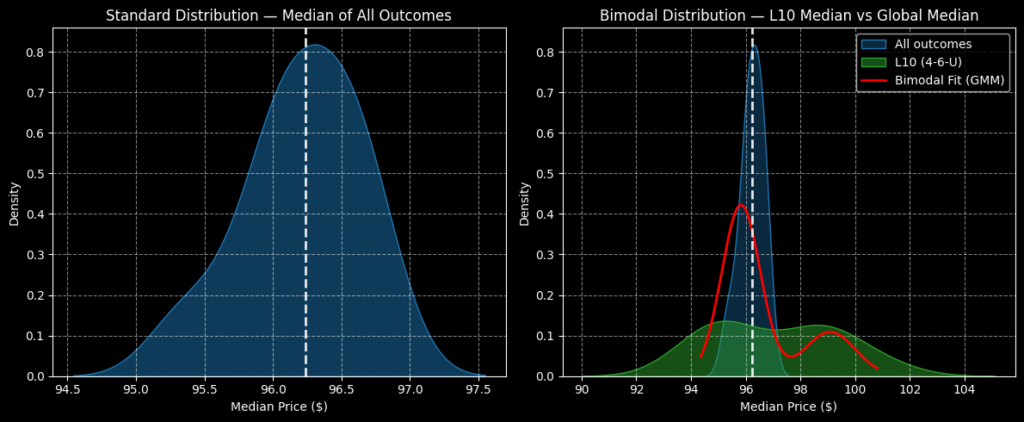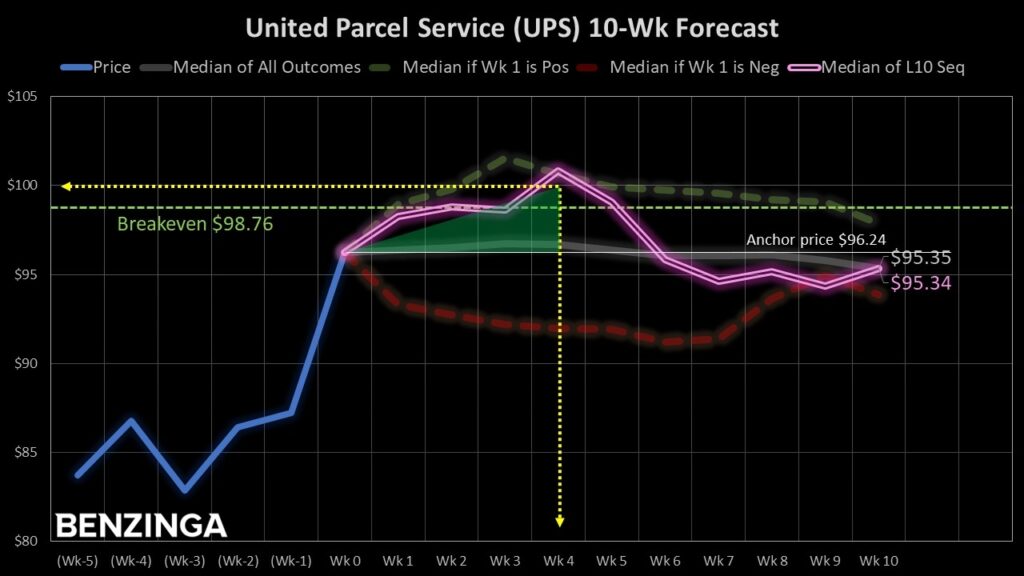
United Parcel Service, Inc. (NYSE:UPS) saw its share price pop dramatically higher, with the logistics giant delivering a resounding earnings beat and forward guidance. Obviously, the news has been baked into UPS stock, which has moved up about 8% during Tuesday's afternoon session. However, what's not so obvious is a flashing quantitative signal, which may point to sustained upside over the next few weeks.
Naturally, the market's enthusiasm centers on the encouraging headline numbers for the third quarter. UPS delivered adjusted earnings per share of $1.74, greatly exceeding Wall Street analysts’ consensus target of $1.31. Further, revenue of $21.4 billion jumped ahead of expectations calling for $20.832 billion.
Just as well, management anticipates revenue of approximately $24 billion in the fourth quarter, above the prior estimate of $23.83 billion. In addition, non-GAAP adjusted operating margin is expected to land between 11% and 11.5%.
Notably, the leadership team highlighted a critical strategic shift in the company along with a focus on delivering long-term value for shareholders. Investors appreciated the news, sending UPS stock up around 14% in the trailing month. It's still down about 24% in the year but the tone surrounding the beleaguered enterprise has changed for the better.
Granted, a single earnings report isn't going to magically convert deeply held skepticism over the logistics specialist. After all, UPS stock has lost approximately 39% in the past five years. Nevertheless, amid the cacophony of the news cycle, a rare quant indicator has materialized, potentially boding well for options traders.
Fishing For Additional Upside In UPS Stock
Undoubtedly, one of the fundamental arguments for UPS stock centers on its valuation. Currently, the security exchanges hands at about 14.29-times trailing-year earnings, which is below the average of 22.65 times. While this might sound like a good deal, the reality is that it's only perceived that way because 14 is a smaller number than 22 or 23. Relative valuation is not a universal truth claim.
Technical analysts will likely claim that UPS stock broke above prior resistance at $88. While true in an observational sense, support and resistance lines also do not represent universal truth claims. However, what we do know through GARCH (Generalized AutoRegressive Conditional Heteroskedasticity) studies is the diffusional properties of volatility.
In essence, volatility is not constant and orderly but rather clusters in non-linear fashion. In other words, high volatility periods tend to follow prior periods of excess volatility, whereas low-volatility environments tend to beget relatively stable conditions. As such, it stands to reason that different market stimuli yield different market behaviors.
Under homeostatic or baseline conditions, forward 10-week outcomes would be expected to range between $94.50 and $97.50 (assuming an anchor price of $96.24). Price clustering would be expected to be most prominent at just a tick higher at around $96.30.
However, the argument is that we're not in a homeostatic state but rather under 4-6-U conditions; that is, UPS stock in the past 10 weeks printed a sequence of four up weeks and six down weeks, with an overall upward slope. Under this behavioral state, the expected 10-week range of outcomes would land between $90 and $105. Stated differently, both the risk and reward tails extend outward in the conditional distribution.

Where the matter gets trickier is in price clustering, which would be predominant at $95 (and thus below the anchor). However, secondary clustering occurs at nearly $99.
What's happening here is that over the next five weeks, the terminal median price of UPS stock would be expected to trade near $100 or above it. That's significant, in part because $100 represents a clear psychological target. However, between the sixth and tenth week, UPS has historically underperformed following the 4-6-U quant signal.
To be fair, the latest earnings report may have changed the calculus of this sentiment regime. But from a strictly by-the-numbers perspective, it may be better to consider a near-term trade rather than a long-exposed one.
Putting The Data To Good Use
As a general principle, having extra time — especially for out-of-money strategies — is a nice luxury. However, in this case, having too much time can be a problem because past analogs suggest volatility in the later weeks.

Based on the market intelligence collected, then, arguably the most aggressive trade that still makes sense is the 98/100 bull call spread expiring Nov. 21. This trade involves buying the $98 call and simultaneously selling the $100 call, for a net debit paid of $76 (the most that can be lost).
Should UPS stock rise through the second-leg strike ($100) at expiration, the maximum profit is $124, translating to a payout of over 163%. Breakeven comes in at $98.76.
A less aggressive but more probabilistically tenable target is the 96/98 bull spread, also expiring Nov. 21. However, the payout penalty is steep, with the maximum landing at only 88.68%.
Overall, it's a risky idea because much (if not most) of the enthusiasm has been baked into UPS stock. However, because of the quant signal, there could be an extra drop left in the tank. This drop, while miniscule on an absolute scale, can be magnified considerably through the leverage of options.
The opinions and views expressed in this content are those of the individual author and do not necessarily reflect the views of Benzinga. Benzinga is not responsible for the accuracy or reliability of any information provided herein. This content is for informational purposes only and should not be misconstrued as investment advice or a recommendation to buy or sell any security. Readers are asked not to rely on the opinions or information herein, and encouraged to do their own due diligence before making investing decisions.
Read More:
Image: Shutterstock







